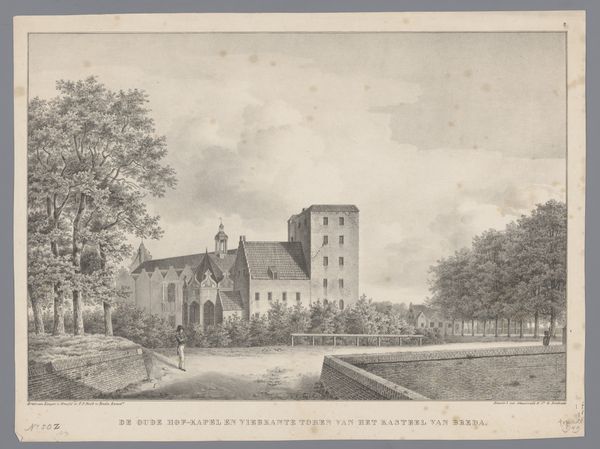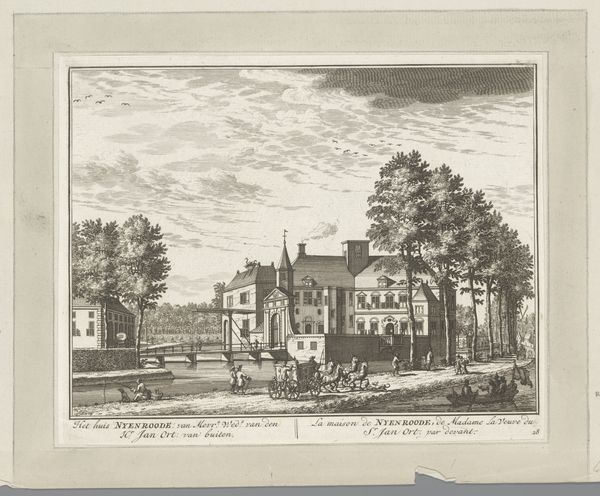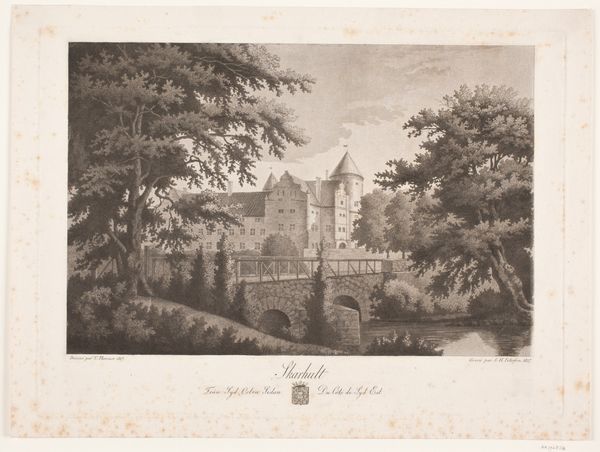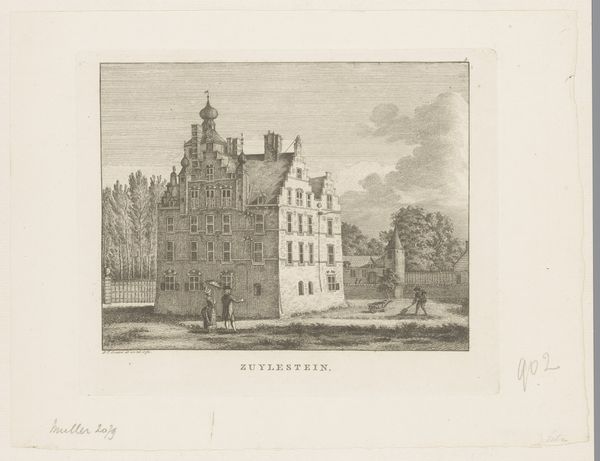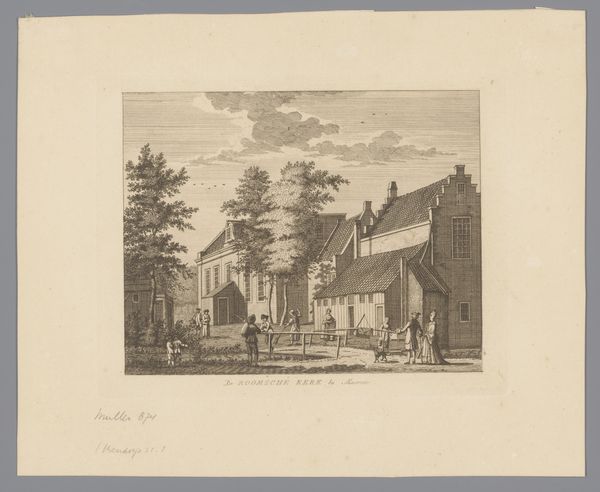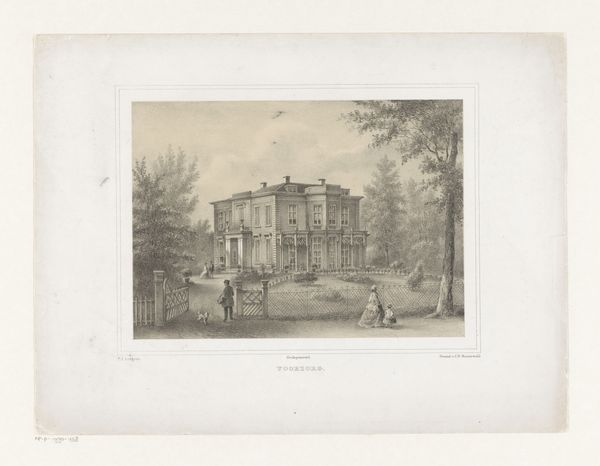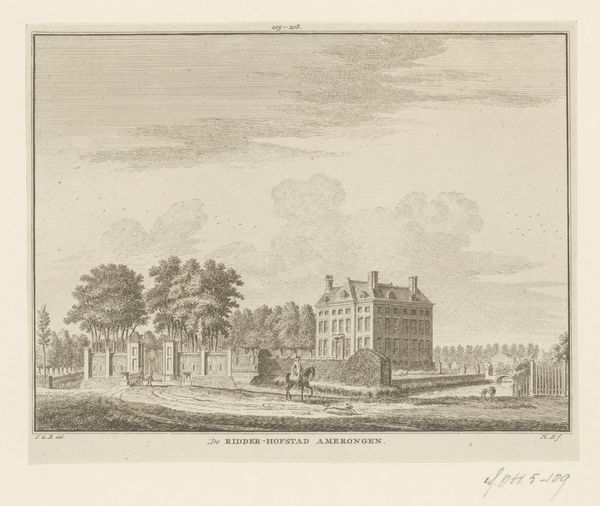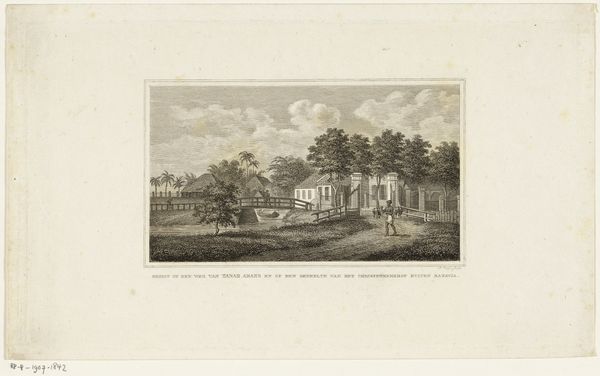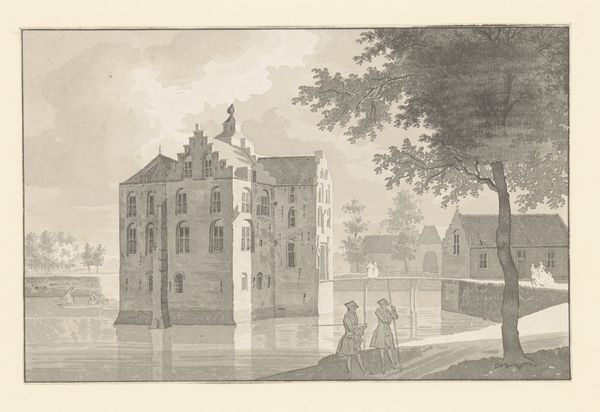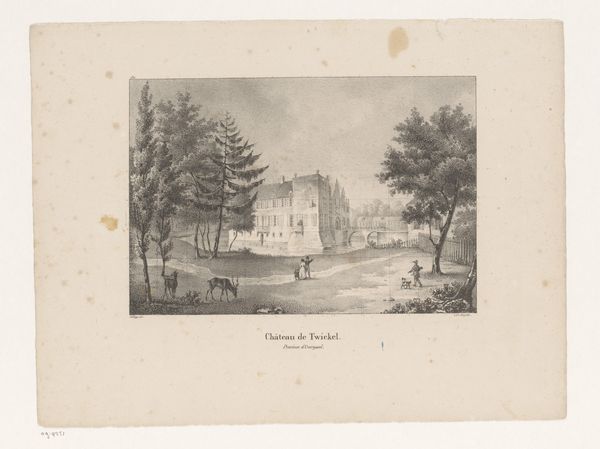
drawing, paper, ink
#
drawing
#
landscape
#
paper
#
ink
#
cityscape
#
realism
Dimensions: height 242 mm, width 313 mm
Copyright: Rijks Museum: Open Domain
Curator: Ah, here's an intriguing one! This is a drawing from 1827-1829 entitled "Gezicht op kasteel Beverweerd bij Werkhoven" - that's "View of Beverweerd Castle near Werkhoven". Done in ink on paper, and by an anonymous hand, of course. Editor: It feels like stepping into a storybook illustration. There's a sense of stillness, a quiet dignity, almost melancholy, perhaps because it’s rendered in monochromatic shades. Curator: Precisely! Look how the artist used delicate lines to capture the reflection of the castle in the water, a rather realistic treatment. One can imagine folks boating in a similar way today. But, you know, I always wonder about the hands behind these anonymous pieces. Were they professionals? Amateurs? Did they imagine their art would survive the centuries? Editor: Considering the time period, such leisure was probably accessible to very few and usually meant stolen or forced labor to make such an experience happen, right? I'd be interested to investigate more the context of labour practices from the time. How might enslaved or working class peoples have perceived such imagery, or been erased by its making? Curator: A good point, always wise to recall that things might be picture perfect on the surface, but there is often a less-than-ideal foundation on which these scenes were constructed. Still, the formal execution... the artist carefully balances the architectural grandeur with the serenity of the landscape, offering a compelling composition of light and shadow, really capturing the essence of the period’s artistic sensibility, perhaps the vestiges of romanticism. Editor: Yes, but that very "essence" can conceal those uncomfortable historical realities. While some found solace or escape in picturesque scenes like this, others may have felt a sting of exclusion. I wonder, did art of this era also act as a form of visual propaganda, subtly reinforcing societal hierarchies? Curator: Propaganda, perhaps? That's an intriguing point. I hadn't thought of it that way. Anyway, it is compelling, whether you appreciate it for its compositional elements, the calm, still vibe it emits or what its depiction and possible propagation could symbolize. Editor: Absolutely. For me, it underscores the necessity of art historical examination that extends beyond the aesthetic to include critical analysis of its social and political implications.
Comments
No comments
Be the first to comment and join the conversation on the ultimate creative platform.
